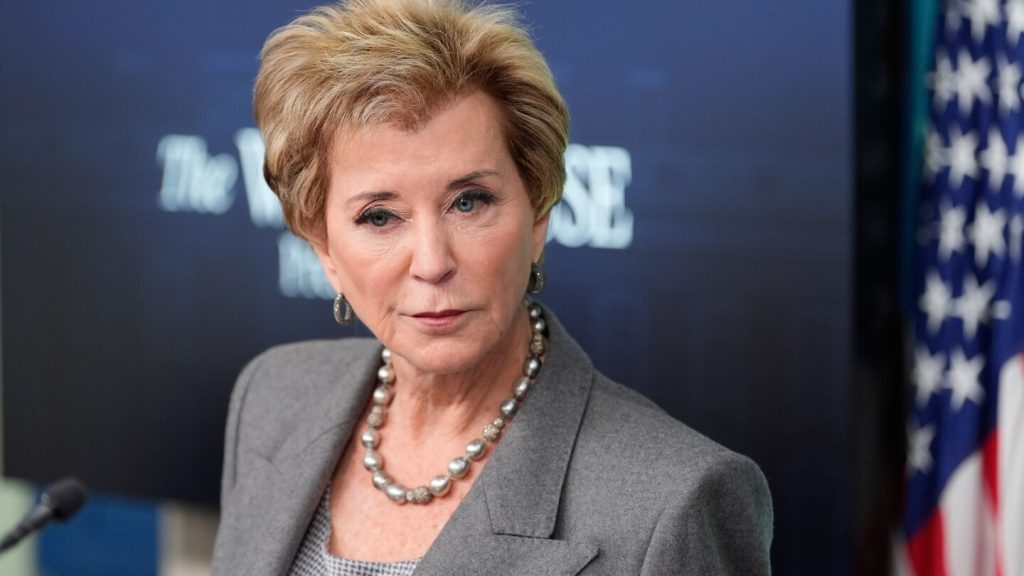Listen to the article
The Trump administration has unveiled a controversial plan to dismantle the Department of Education, raising concerns among educators and state officials about increased bureaucracy rather than improved academic outcomes.
Instead of consolidating educational oversight in one agency, the administration is spreading the department’s functions across four federal agencies. President Trump views this as progress toward his goal of eliminating the department entirely and returning more educational control to states. However, many state education leaders are expressing serious reservations.
“The plan increases bureaucracy fivefold, undoubtedly creating confusion and duplicity for educators and families,” said Washington state’s education chief. California’s top education official described it as “clearly less efficient,” while Maryland’s superintendent worried about “the challenges of coordinating efforts with multiple federal agencies.”
Wisconsin’s state superintendent Jill Underly was particularly blunt: “States were not engaged in this process, and this is not what we have asked for — or what our students need.” Underly suggested that providing states greater flexibility and reducing standardized testing would be more beneficial approaches.
Education Secretary Linda McMahon has attempted to reassure stakeholders that schools will continue receiving federal funding without disruption. She maintains that schools will ultimately benefit from increased resources and flexibility once freed from departmental oversight.
The administration’s reorganization relies on interagency agreements since only Congress has the authority to abolish a federal department outright. These agreements, signed just before the government shutdown and announced Tuesday, transfer most school funding and support functions to the Department of Labor. The Education Department will retain some responsibilities, including policy guidance and supervision of Labor’s education work.
Other programs are being transferred to the Departments of Health and Human Services, State, and Interior. While interagency agreements aren’t unprecedented—the Education Department already had numerous such arrangements—the scale of this reorganization is unprecedented, shifting the majority of education funding to other departments.
Some state officials, like Virginia schools chief Emily Anne Gullickson, expressed support for the changes, noting that schools already work with multiple federal agencies and welcoming increased state authority.
Reactions have largely fallen along political lines. Congressional Democrats warn the restructuring will harm vulnerable students, while Republicans have praised it as a triumph over bureaucracy. However, not all conservatives are on board. Senator Lisa Murkowski (R-Alaska) expressed concern that relocating programs to agencies lacking educational policy expertise could harm young people. Margaret Spellings, education secretary under President George W. Bush, called the plan a distraction from addressing the nation’s educational crisis.
“Moving programs from one department to another does not actually eliminate the federal bureaucracy, and it may make the system harder for students, teachers and families to navigate and get the support they need,” Spellings noted.
The administration cites declining academic performance as justification for the overhaul. U.S. math and reading scores plummeted following the COVID-19 pandemic, and reading scores had remained stagnant for decades prior. McMahon characterized the plan as a “hard reset” that maintains federal support while ending “federal micromanagement.”
American Federation of Teachers president Randi Weingarten questioned the logic: “Why would you put a new infrastructure together, a new bureaucracy that nobody knows anything about, and take the old bureaucracy and destroy it, instead of making the old bureaucracy more efficient?”
The full impact remains uncertain, but school districts are already concerned about losing access to the Education Department’s policy expertise. One crucial departmental function has been serving as a resource for questions about complex funding formulas and special education laws.
“What could happen is services are not provided because you don’t have an answer,” warned David Law, superintendent of Minnetonka Public Schools in Minnesota and president of a national superintendents’ association.
Critics also question whether other departments have the capacity to absorb new responsibilities. The Labor Department will take over Title I, an $18 billion grant program serving 26 million students in low-income areas—a significant increase from the 130,000 people it currently serves annually through existing grant programs.
In Massachusetts, Salem’s 4,000-student school system receives approximately $6 million in federal funding for disadvantaged students. Superintendent Stephen Zrike expressed concern about potential new “rules of engagement” under Labor Department oversight, noting, “The level of uncertainty is enormous.”
Some opponents point out that the Education Department was originally created to consolidate educational programs that had been scattered across multiple agencies—precisely the opposite of what’s now occurring.
Fact Checker
Verify the accuracy of this article using The Disinformation Commission analysis and real-time sources.




8 Comments
Dismantling the Education Department raises a lot of red flags. Spreading its functions across multiple agencies is a recipe for confusion and inefficiency. Our students deserve better from our federal government.
Exactly. This plan appears to be more about fulfilling an ideological agenda than actually improving educational outcomes. We should be focused on supporting teachers and students, not creating more bureaucratic hurdles.
Returning more control to states is a noble goal, but not if it comes at the cost of increased confusion and inefficiency. The states should have been involved in this process from the start to ensure their needs were met.
I agree. State education leaders are rightly concerned about the challenges of coordinating with multiple federal agencies. This plan risks creating more problems than it solves.
This plan to dismantle the Education Department seems shortsighted. Spreading its functions across multiple agencies could create more bureaucratic hurdles for schools and families. I worry this will disrupt crucial educational initiatives and oversight.
While decentralizing education has some merits, this plan seems overly disruptive. Increased bureaucracy and lack of coordination are the last things our schools need right now. I hope cooler heads will prevail.
I’m very concerned about the potential impact of this plan on our public education system. Reducing the role of the Education Department could undermine critical initiatives and oversight. We need to ensure our schools have the resources and support they need.
As an educator, I’m deeply troubled by this proposal. Eliminating the Education Department entirely seems extreme and could have serious unintended consequences for our students’ learning and development.